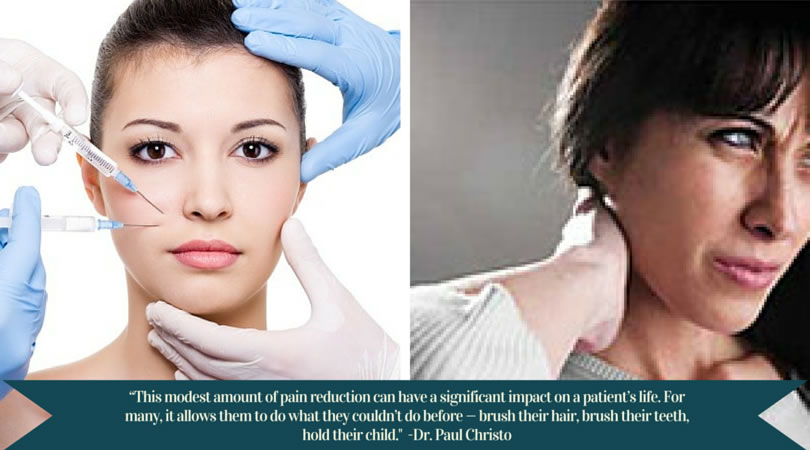Botox can be a safe, noninvasive alternative to surgery for certain health conditions.

Botox treatments may help people with certain medical conditions manage their pain and improve their quality of life.
Emmy and Tony-award winning actress and singer Kristin Chenoweth admitted to Prevention Magazine back in 2011 that she gets Botox (botulinum toxin) regularly, but not for the reason you’d think. If you too would like some botox or other some other surgery, then you can visit Renewus Medspa, who has the goal to make you look and feel the best you can but you may want to keep reading before you make up your mind.
At the age of 35, Kristin told her doctor about the debilitating migraines she had about once a week. The doctor suggested a few shots of Botox, but Kristin was hesitant since she makes her living through her facial expressions. “You’re not going to have a living if you can’t work” the doctor said.
Impressed by the results from her first session, Kristin continues to get injections every 6 months to help manage her migraines, and says she hasn’t had a full-blown headache since.
Doctors have been treating various types of pain with Botox for years. It not only reduces muscle overactivity, but probably also decreases pain and inflammation. I helped pioneer Botox to ease symptoms of neurogentic thoracic outlet syndrome (NTOS), a debilitating nerve compression disorder.
Years ago, a patient named Danielle came in seeking treatment for her NTOS, which caused hand numbness, weakness, and neck pain. As an active single mother, Danielle’s lifestyle didn’t exactly cater to surgery, so I suggested Botox.
Botox may be an effective treatment that avoids surgery’s obvious drawbacks, such as its invasive nature and long recovery time. A study I published in an April issue of the journal Pain Medicine, found that patients with the condition reported a significant reduction in short-term pain after receiving a single, low-dose injection of Botox in a muscle located in the neck. We found that even after 3 months, patients benefitted from the therapy. This suggests Botox is a safe, noninvasive alternative to the syndrome’s treatment of last resort: surgery to remove the first rib and sever one of the muscles in the neck.
Yet, just as when Botox is injected into facial wrinkles, it is not a permanent solution. Patients can get repeat treatments to help manage their pain and improve their quality of life. In fact, my patient, Danielle said her relief was immediate, allowing her to get back to doing the things she loves, like gardening. It can often take two weeks or so to begin seeing the benefits of Botox, though.
The FDA recently approved an expansion of the BOTOX® (onabotulinumtoxinA) label for the treatment of adults with upper limb spasticity. It now includes the addition of two thumb muscles: flexor pollicis longus, a muscle in the forearm that flexes the thumb; and adductor pollicis, a muscle in the hand that functions to adduct the thumb. For the 1.8 million Americans who have upper limb spasticity as a result of a stroke, Botox is now a possible treatment option.
Because of its safety and clinical benefit, Botox is also used to help treat and manage symptoms associated with other medical conditions such as lumbar muscular pain, tennis elbow, painful neck spasms (torticollis), and excessive sweating (hyperhidrosis). The latter can cause low-self esteem and can severely affect someone’s life as they may avoid wearing certain clothes and even avoid interacting with other people. With low pain and limited discomfort and no recovery, excessive sweating can be a thing of the past.
